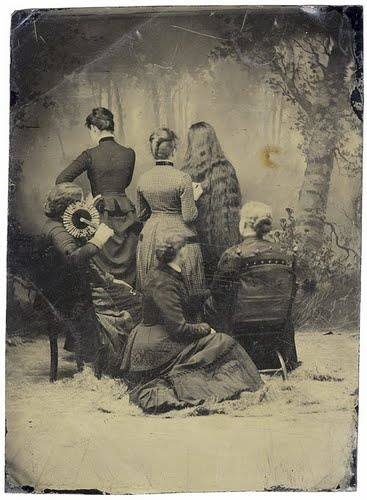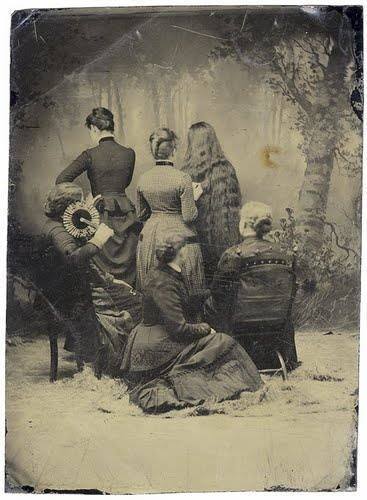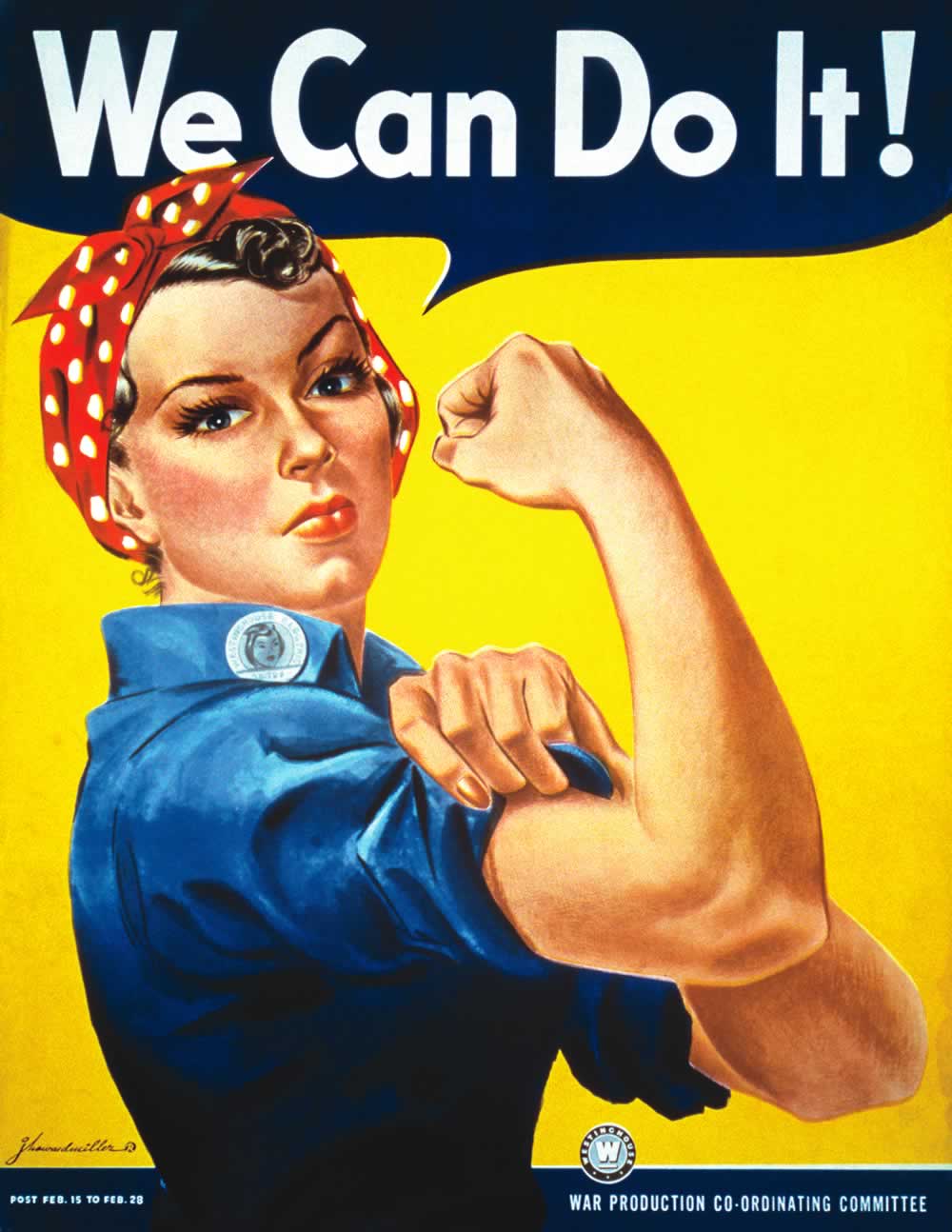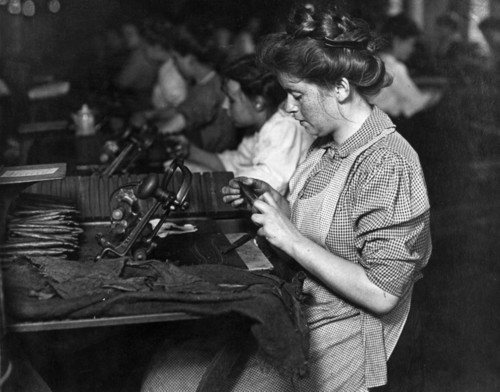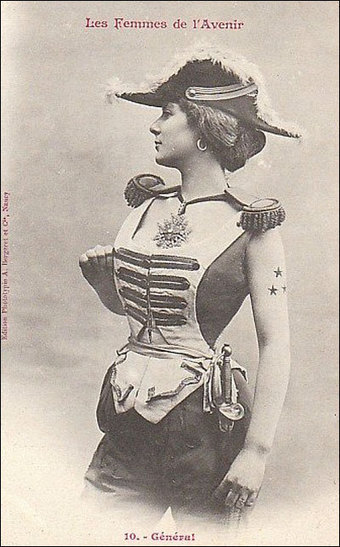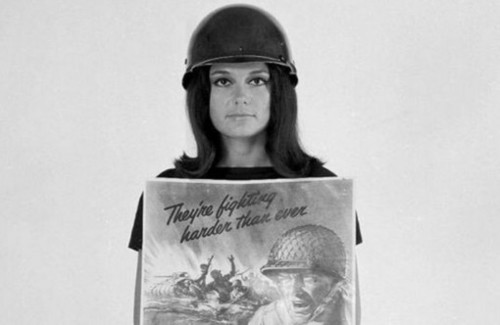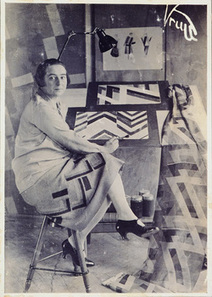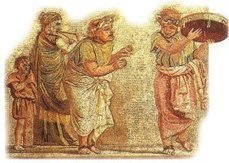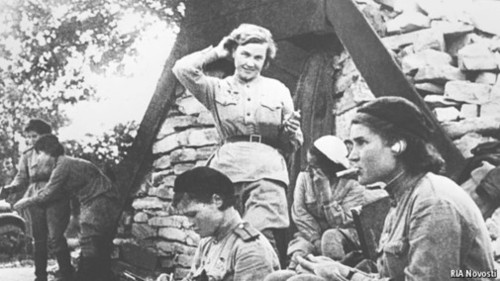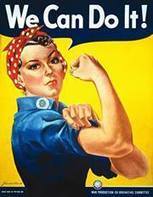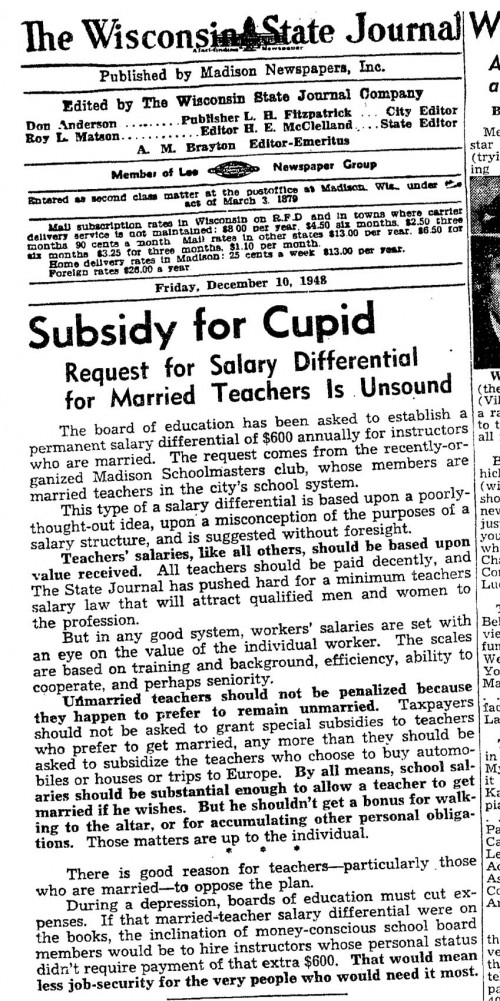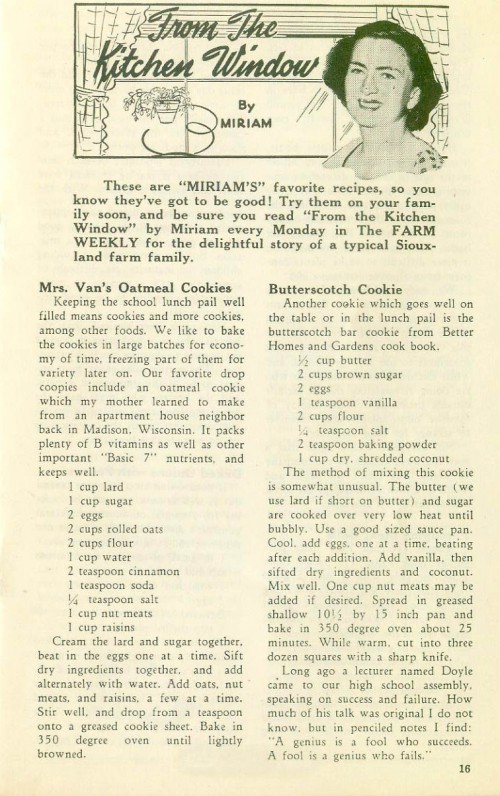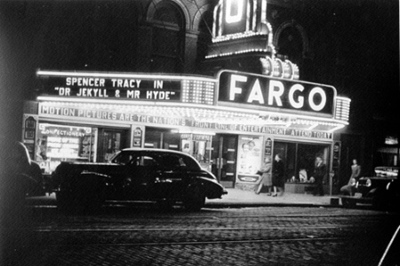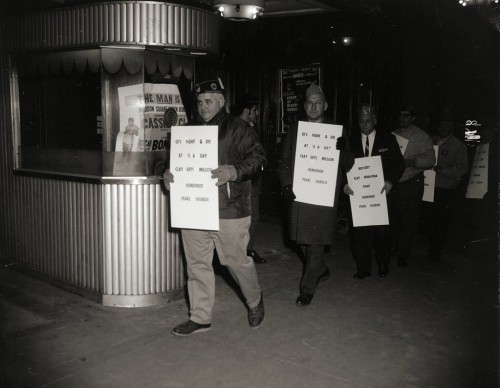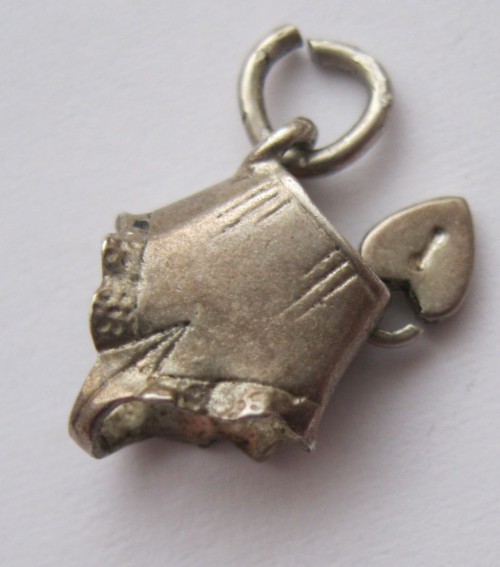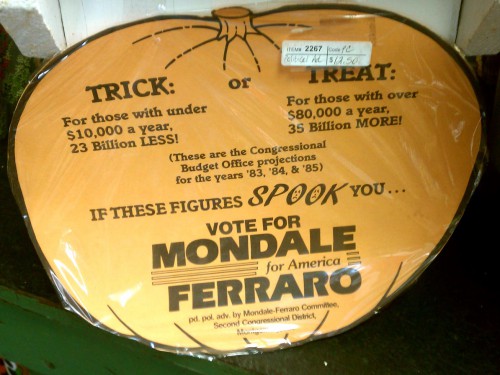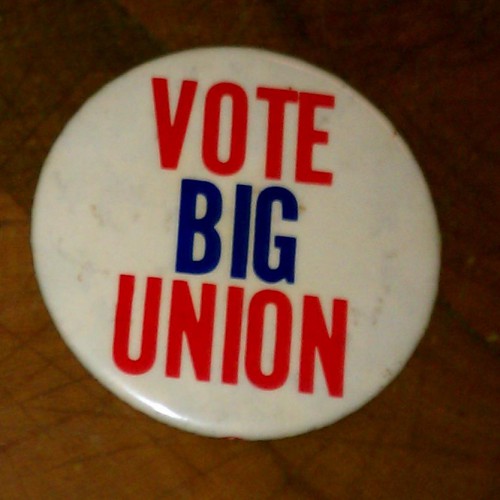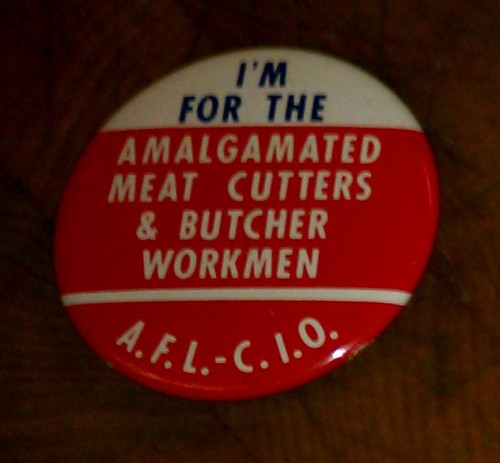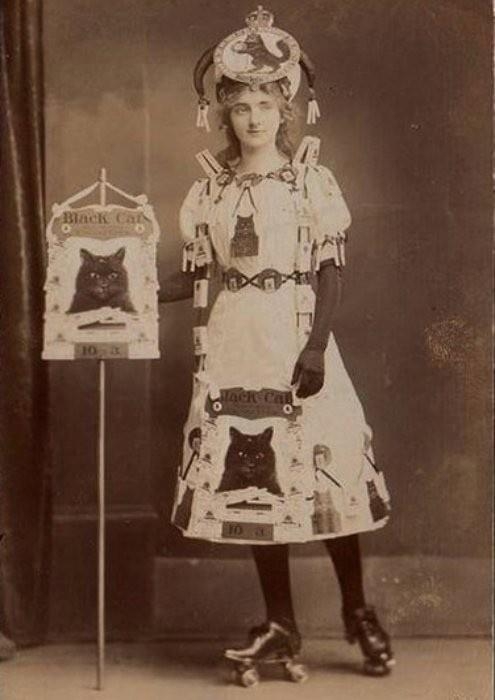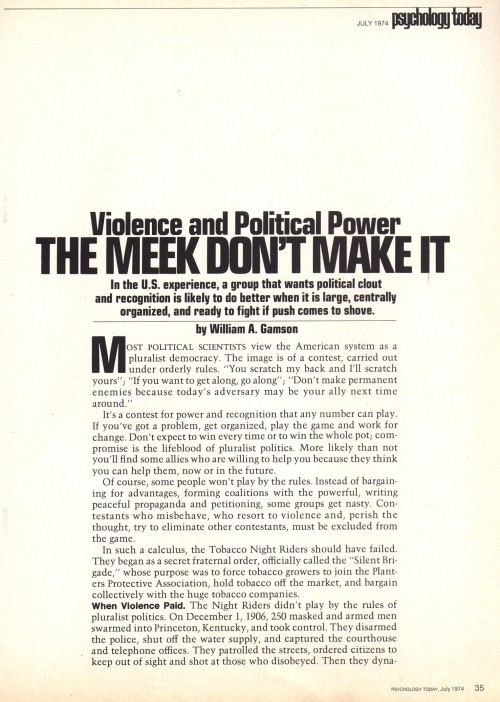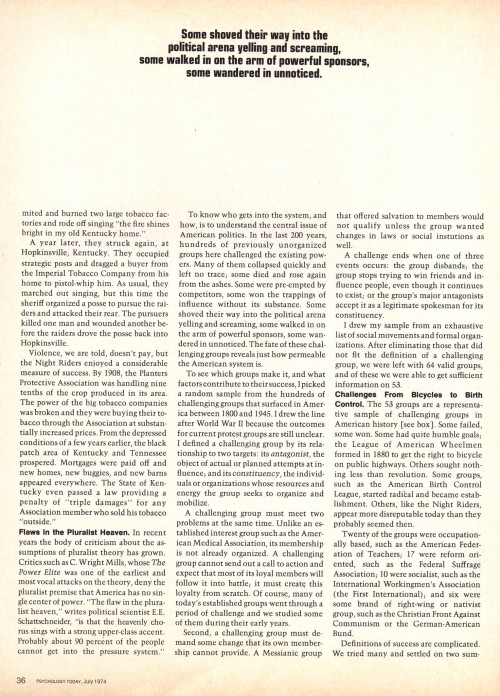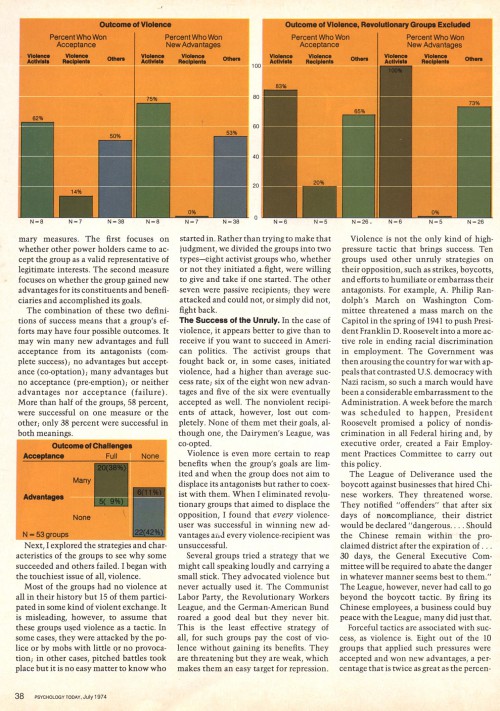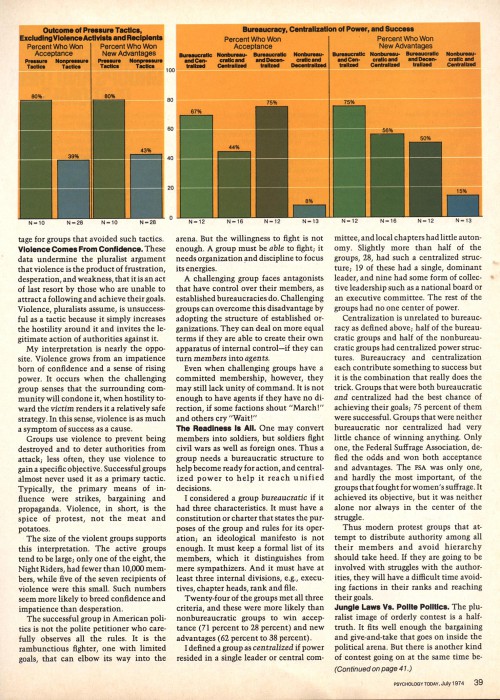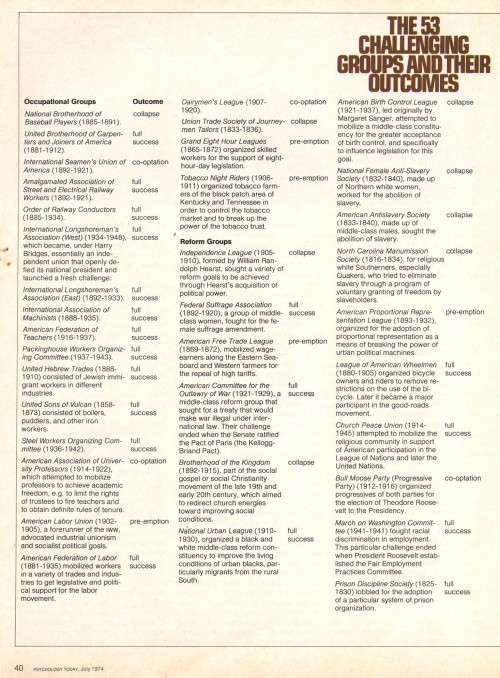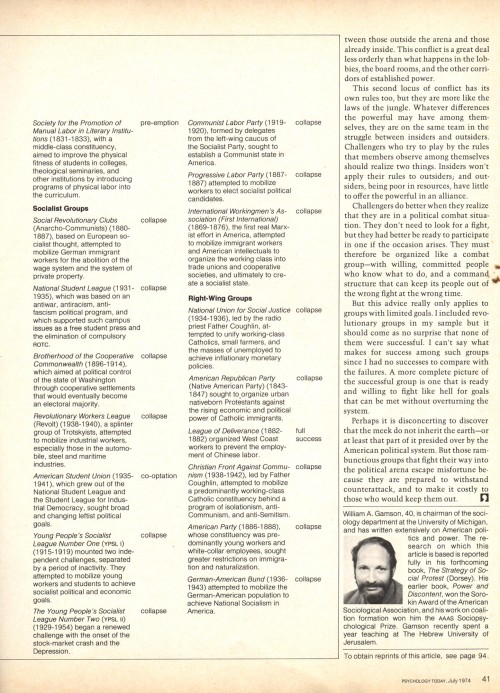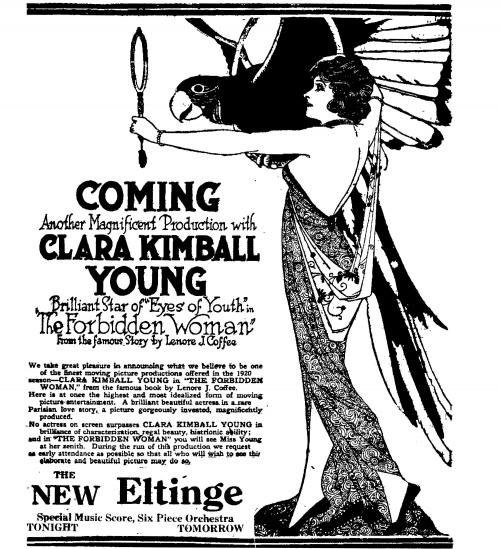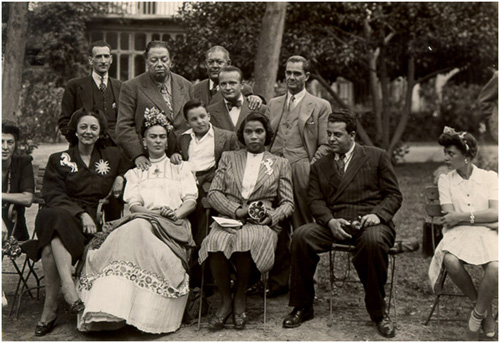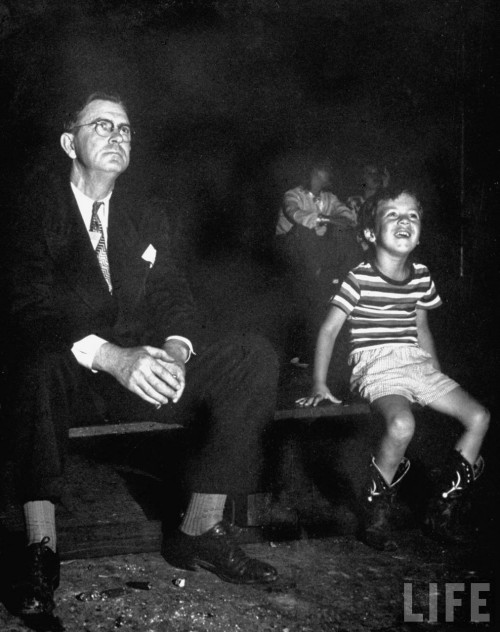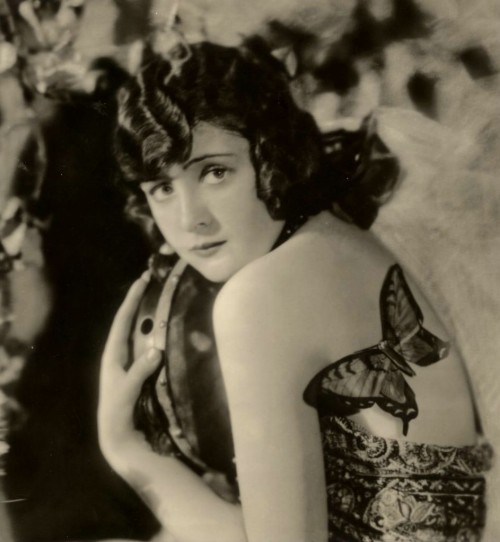See on www.facebook.com
Tag: history
Secret History of the Black Pin Up
(ALSO AVAILABLE AS EBOOK download for iPAD $5.99) Intrigued by the question “Why aren’t there any black pin up girls” on an internet message board, writer Jim Linderman decided to find out.
See on www.blurb.com
Hypocrisy, Hate and Harm #no2h8splc
[This] is what happened when a bunch of RadFems righteously took over the offices of the Ladie’s Home Journal because it was a vector for promoting false stereotypes about women. Protesting negative stereotypes of cisgender women in the media has a long and proud tradition among feminists.
See on www.transadvocate.com
In Lilli Vincenz’s papers, a trove of gay rights history
History is written by the victors, but also by the scrapbookers, the collectors, the keepers, the pack rats. By those who show up, at the beginnings of things and with the right technology. History sometimes comes in pieces. It needs to be reassembled. Pasted and coaxed. Sometimes the finished product still has holes.
In one corner of the climate-controlled manuscript division, on a series of otherwise empty shelves, sits Lilli Vincenz’s unprocessed collection. …
Twelve boxes. Cream-colored. Heavy. Inside: meticulous fragments of the gay rights movement of the latter half of the 20th century. Political pamphlets, sociological surveys, photographs and obituaries. Diaries of a young woman who was nervous about going into her first gay bar but whose Arlington living room later became the default place for gay women to feel at home.
See on www.washingtonpost.com
4 Women’s Issues That Haven’t Changed Since 1911
Over 100 years ago, radical writer and activist Emma Goldman penned the essay “The Tragedy of Woman’s Emancipation.” In the piece, which the Atlantic unearthed on July 12th, Goldman explores issues of equal pay, the tension between family life and…
See on www.huffingtonpost.com
Women of the Future, 1902
Generals, marines, lawyers, coach drivers, politicians, and even artists! These were “Les Femmes de l’Avenir,” or “Women of the Future,” as imagined in a series of 20 postcards from the turn of the last century.
See on coilhouse.net
Gloria Steinem – Pop Art Protests
As one of the leading American feminists since the early 1960s Gloria Steinem has had a long, varied and controversial career as a writer and political activist that has seen her employed as an ‘undercover’ Playboy bunny, lobby as a pro-abortion…
See on www.voicesofeastanglia.com
Sonia Delaunay : Textile Artist
When reading about the history of fiber art it seems to take on many elements. The history of fiber art incorporates craft, textile and design elements that are not usually explored in regular art history. The use of embroidery and clothing inspired artists such as Sonia Delaunay who had started off as a painter and found new inspirations when she shifted her medium from brush, canvas and oil paint to needle, thread and textile printing. In exploring Sonia’s textile and wearable art works I’d like to explore her success as a woman in the art world.
Volumnia Cytheris
Cytheris was born a slave in the latter days of the Roman Republic, about 70 BCE. Her parents were probably Greek, and her name (deriving from Cytherea, one of Aphrodite’s bynames) may not be the one she was originally assigned at birth, but rather one she adopted (or was given) later when it became clear what her profession would be. She was the property of the wealthy and ambitious Publius Volumnius Eutrapelus, an enthusiastic patron of the theater, who had her trained as a mime and introduced her to the theater in her early teens. Roman mime was not the silent niche-art it is today, but rather a blend of singing, dancing and acting, much of it improvised; it is therefore more closely akin to vaudeville than to Mummenschanz or Marceau. As I mentioned in “Meretrices and Prostibulae”, most mimes – like most actresses for centuries before and millennia after – were also prostitutes, and Cytheris was probably in the group of mimes who in 55 BCE began the tradition of ending the Floralia with a striptease (the public sex was not added until imperial times).
See on maggiemcneill.wordpress.com
Nadezhda (Nadia) Popova, night bomber pilot, died on July 8th, aged 91
WHEN their hair was chopped off—as it had to be when they joined one of the Soviet Union’s three women-only air-force regiments—some of the women looked just like boys. Add in the bulky flight jackets, the too-big trousers and the size 42 boots, all made for men, and they could have passed for male pilots, just about. Not Nadia Popova. Somehow she managed, with a cinched waist here and a few darts there, to look like a Hollywood star. Between sorties she would fluff her hair, pressed flat by her leather flying helmet, in her tortoiseshell mirror (as at the centre of the picture above). Before each flight she would pin to her uniform a beetle brooch, which also served as a lucky charm. Beside her wooden cot in whatever shed they were sleeping in—once a cowshed—she kept a white silk blouse and a long blue silk scarf, in case she had to make a really feminine impression.
This was also the young woman—she was 19 or 20 then—who could turn her aircraft over and dive full-throttle through raking German searchlights, swerving and dancing, acting as a decoy for a second plane that would glide in silently behind her to drop its payload of bombs. That done, the second plane would act as decoy while she glided in to drop bombs herself. She made 852 such sorties in the second world war as a pilot in the 588th Night Bomber Regiment, later named the 46th Guards in honour of its courage.
See on www.economist.com
Sarah Good: Accused Witch | History of Massachusetts
Sarah Good was one of the first women to be accused of witchcraft during the Salem Witch Trials of 1692. A homeless, and pregnant, beggar who would often wander door to door asking for handouts while her husband worked as a day laborer, Good was a prime target for the accusation of witchcraft in the small Puritan-run town where nonconformity was frowned upon.
See on historyofmassachusetts.org
Herstory at Facebook
History, politics & culture as this woman sees it. The serious, the kitsch, the opinionated.
A place to connect with Herstory at Facebook.
See on www.facebook.com
Transgender women of Paris in the Fifties and Sixties
These beautiful photographs of transgender women, in Paris from the late 1950s and early 1960s were taken by Swedish photographer Christer Strömholm, who traveled to Paris in the late-fifties, where he hoped to create a new kind of night-life…
See on dangerousminds.net
No Subsidy For Cupid, Stupid (Lessons In Pay Equity & The Value Of Teachers, From 1948)
I found this article, Subsidy For Cupid: Request for Salary Differential for Married Teachers Is Unsound, in the December 10, 1948, edition of The Wisconsin State Journal.
The first line reads, “The board of education has been asked to establish a permanent salary differential of $600 annually for instructors who are married.” This had me thinking that the proposed salary adjustment would remove $600 a year for married teachers; you know, because married women are therefore little women who do not really need a salary anyway. But then we get to the second line. “The request comes from the recently-organized Madison Schoolmasters club, whose members are married teachers in the city’s school system.” Surely this club would not be suggesting they cut their own salaries?!
Read on:
This type of a salary differential is based upon a poorly-thought-out idea, upon a misconception of the purposes of a salary structure, and is suggested without foresight.
Teachers’ salaries, like all others, should be based upon value received. All teachers should be paid decently, and The State Journal has pushed hard for a minimum teachers salary law that will attract qualified men and women to the profession.
[Hear that, Scott Walker, et al.?]
But in any good system, workers’ salaries are set with an eye on the value of the individual worker. The scales are based on training and background, efficiency, ability to cooperate, and perhaps seniority.
Unmarried teachers should not be penalized because they happen to prefer to remain unmarried.
[The picture becomes a bit clearer now…]
Taxpayers should not be asked to grant special subsidies to teachers who prefer to get married, any more than they should be asked to subsidize teachers who choose to buy automobiles or houses or trips to Europe.
[I am astounded at the suggestion that at any time in our history a teacher could afford a trip to Europe on their own salary!]
By all means, school salaries should be substantial enough to allow a teacher to get married if he wishes.
A-ha! So here it is! We are primarily speaking of male teachers! You know men, they have to take care of the little woman, the kids, the bills, the dog… No woman has to do that.]
But he shouldn’t get a bonus for walking to the altar, or for accumulating other personal obligations. Those matters are up to the individual.
***
There is good reason for teachers — particularly those who are married — to oppose the plan.
During a depression, boards of education must cut expenses, If that married-teacher salary differential were on the books, the inclination of money-conscious school board members would be to hire instructors whose personal status didn’t require payment of that extra $600. That would man less job-security for the very people who would need it most.
While the ending line nearly eradicates my hopes of some sort of gender equality, the lines before it certainly are felt in the pink ghetto and by women at every level during the rough economic times. When talking heads speak of how women are faring better, their 77 cents to a man’s dollar means a twisted sort of job-security.
More Women In The Pages
Another woman for the women’s pages is Miriam Baker Nye. Known simply as “Miriam” — often used just like that, in quotes — she wrote a regular column for rural women entitled From the Kitchen Window which ran from 1953-1981 in the Farm Weekly. (The Farm Weekly was a publication of The Souix City Journal and Journal-Tribune newspapers of Souix City, Iowa, which served “all Siouxland.”) This scan of page 16 of Here’s How The Farm Weekly Serves You presumably shows the regular header for her columns.
Her recipes and ideas from that column would later be published in book form in Recipes and Ideas “From the Kitchen Window” (1973). (If there aren’t any copies at Amazon, check eBay.)
She would also author But I Never Thought He’d Die: Practical Help for Widows (1978) after the death of her husband, Carl Baker. (Three years after Mr. Baker’s death, Miriam would marry Methodist minister Reverend John Nye and become Miriam Baker Nye.)
When Movie Theatres Die
I watched both of these on TCM a few weeks ago and was thrilled to find them available online. This Theatre and You was put out in 1948 by the Academy of Motion Pictures Arts and Sciences to educate about the importance of movie theatres in a community — your community. And 1953’s The Case Against the 20% Federal Admissions Tax on Motion Picture Theatres provides a look at an industry which may seem like a dinosaur now, as we sit solo and absorb our individual digital media. But moving away from the shared experiences of film certainly explains a lot about the failings of old downtown centers and communities alike.
It’s well worth the little over 30 minutes of your life to watch both of these.
Image of the Fargo Theatre, 1941.
Sign Of The Times, 1970
In this photo, veterans protest the Cassius Clay VS. Oscar Bonavena match at Madison Square Garden in December 1970.
Their signs read, “GI’s fight & die at $5 a day; Clay gets million; Remember Pearl Harbor” and “Boycott Clay Bonavena fight; Remember Pearl Harbor.”
Muhammad Ali would triumph a year later, when the Supreme Court would reverse his conviction and uphold his right to be a conscientious objector against the Vietnam War.
The Early History of Women & Film
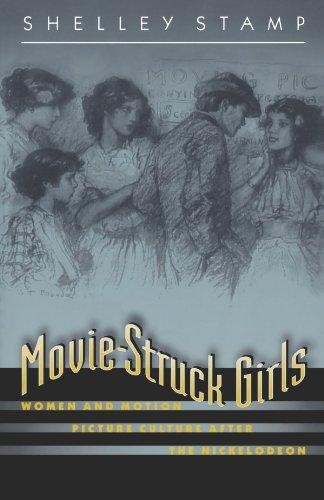 In Movie-Struck Girls: Women & Motion Picture Culture After the Nickelodeon, by Shelley Stamp, we learn more than just the roles of women in films or behind the camera — we learn about women’s role as patrons of cinema.
In Movie-Struck Girls: Women & Motion Picture Culture After the Nickelodeon, by Shelley Stamp, we learn more than just the roles of women in films or behind the camera — we learn about women’s role as patrons of cinema.
The book is an eye-opening look at a long ignored part of American film history — and an astonishing look at the history of women as media consumers.
Stamp spent over ten years researching for this book. She studied trade journals, fan magazines, ephemera, and many official documents and records at the National Board of Censorship Archives in New York City, the Academy of Motion Picture Arts and Sciences’ Margaret Herrick Library in Los Angeles, & the New York Public Library for the Performing Arts. Many of the films she reviewed are no longer readily available, let alone circulating, but can be found at the Library of Congress & the UCLA Film and Television Archive.
It sounds like a huge undertaking, & I thank her for it. ‘Movie-Struck Girls’ presents a wealth of information that I had never known before.
Movies began with the nickelodeon, and as such, movies were not places for proper or even improper ladies to be. In the early 1900s, when films were being moved from temporary places with projection onto sheets & walls, and cinemas were being built, many in the business of film, began to reconsider women. This was a purely economic move. For if these new developments, these more expensive buildings, were going to pay for themselves & gain profits to pad pockets, the new movies must include women as patrons & gain their approval.
Why? In ‘Movie-Struck Girls’ the author reminds us of an America where women were seen as the keeper of the family morals. Neither little Johnny Jr. nor Johnny Sr. would be allowed to go to such places if Mother didn’t approve. In order for women to view movies as more than sordid places where her family wouldn’t be caught dead, these new cinemas would need to gain the respect of women. The best way to do that, would be to show women, fine respectable women, how respectable & fine the theaters were. It was thought that if women would give the theaters a try, and continue to come, their physical presence would elevate the standing of film viewing.
So, movie theater owners began to court women as patrons.
They did so via premiums & tie-ins & in addressing the decor of the cinemas themselves. As a marketing person, I enjoyed the conceptions about women, and how they would lure them into the movie-going fold — with many of the tricks still employed in the movie trade today. As a woman, I felt more than a bit bitter to see what they thought…
As Stamp illustrates, cinemas were designed with appeal to women in mind. They were located near shopping and offered services such as package holding with hopes of luring women into the buildings. The buildings themselves were decorated to attract the feminine. It was suggested in industry publications that cinemas ought to have lobbies, with plenty of mirrors, to encourage female patrons — by appealing to their vanity. They thought ‘what woman doesn’t want to see herself & parade for others?’
But then, they complained that women didn’t know how to behave properly: they talked, they interrupted the absorption of the movies themselves. The very women they encourage to be vain, to come to the theater to be seen, these women didn’t want to sit quietly in a dark room full of others who were not paying attention to them. These women who were, by societal standing, to ‘dress’ for these public events, they wore hats that blocked views. And so even while courted by the film industry as valuable assets to ensure the viability of films as safe, moral entertainment for families, the industry mocked them in articles & cartoons. The debate within the industry as to the need for women, how to both cater to while educating them to achieve their purpose, was entering full swing.
But this was only the industry side of the debate; Next, Stamp shows us society’s debates.
In the early 1900’s, the most popular films were vice films, & in the teens, a major societal concern was The White Slave Trade. Sensational white slave films were made during this time, to warn folks of the dangers to their women. Conflicting with the as-billed-educational-films messages, cinemas brought women-folk out into public where they could easily fall prey to such ills as the white slave trade. Debate centered around the irony. Other debate focused on the films themselves, and censorship issues were raised. And to make matters worse, women seemed to enjoy such films! Oh, how could such tender beings watch & enjoy such lewd filth such as scenes from brothels?!
Obviously, women enjoyed the films from the same points of fascination as men, but as the author clearly reminds us, there is more. Adding to the fascination, was the fact that women themselves has seen little of ‘the world’ — even if that ‘world’ was part of their very own city. Through movies, women vicariously saw their nation. This alone would make these films riveting for women.
Again, as movie houses were public gathering places, classes mingled. Not only were there the fine upscale families as so recruited by theater managers, but along with them, the working class — including single women. Single women moved about the theater as patrons, both in danger & dangerous themselves. A woman alone could end up in the slave trade, or she might mingle with gentlemen of good standing… In fact, theaters often hired pretty, single young girls to be ticket sellers, ushers, cigarette girls etc. This was seemingly at odds with the motives of ‘women adding respectability’ and elevating the idea of theater, but it was a lure that worked. But the independent woman, even if only a work-class-girl, is dangerous. Much debate centered around the appropriateness of such places for women & families.
Since the elevation of cinema depended upon the stamp of approval from women, including materials & promotions designed to engage them, the talks about women’s roles in film viewing were discussed by women. Given the general fear of ‘those darn suffragettes,’ encouraging women to debate the social & safety issues of women viewing film — in the context of women viewing educational films about civil matters — seemed a dangerous thing indeed.
The film industry needed to ‘clean up’ the entertainment, so they began to focus on films aimed at women, with stories & formats they knew — Enter the serial film.
The industry coordinated film with print versions of stories in newspaper & print publications. Again, these were often aimed at women, but then came the ‘oh no!’ cry, as women did in fact enjoy the adventure stories. It is at this time that film gave rise to the very popular female star. She was now revered for both her on-screen & off-screen antics. So much so, that young women everywhere started dreaming of being a movie star themselves!
To counter act the scary notion of independent women, adventure serials, & vice films it became routine to mock independent women, with notions of becoming a movie star, or worse, civic ideas. The author clearly shows examples, such as a 1916, The Motion Picture Classic cartoon with the following poem to illustrate this concern:
“When our dear grandmas were girls,
They’d smile and smooth their pretty curls.
Look in the mirror then & say
“Oh, will he think me fair today?”Today the girlies everywhere,
In the mirror gravely stare;
“Am I fair enough,” they day,
“To be a movie star some day?”
But poetry would not be deemed enough. There would also be many films to lampoon the suffragette.
Mainly these films attempted to show how crazy things would be if women could vote. Movies depicting women taking over government & leaving men’s needs behind darkly illustrating the dangers present to men were made, but more often, comedy was used. Cross-dressing men & women exchanged roles, with only love ‘saving’ the women from their folly. Ironically, it seems to the reader that perhaps these movies did more favor to the opposition than to their own cause.
The suffragist movement noted the power of cinema. If educational films were popular, and women not only allowed but encouraged to attend, why not make propaganda films of their own? Both the National American Woman Suffrage Association (NAWSA) & the Women’s Political Union (WPU) made films to both rally women to the cause & to educate resistant men & women. Sadly, many of their films seemed to falter at romantic notions. In order to make the female stars appealing, less threatening, most often the female lead would succumb to love & home, happy with her vote, but definitely not claiming civic responsibilities.
In ‘Movie-Struck Girls’ you learn all about these long-hidden details of American film history & it’s collision with turn of the century American values — including titles, studios, stars, organizations, & political figures. For a person who adore film & is a passionate feminist, this is a great read. Why it’s as thrilling as those old adventure serial films!
Stamp does a great job of presenting this long ignored part of film — and women’s — history. It’s definitely an academic read, which means it is meaty enough for those who want to further search for clues, artifacts & films themselves. It may not read like a novel, but it’s so fascinating & full of details, it won’t disappoint. Fans of film, especially silent films, cannot call themselves educated in the subject unless they know this history. And women, well, we start to see a much larger image emerge — our complaints regarding women in the media have much deeper roots than we previously knew.
Antique Chastity Charm
As a feminist and collector of women’s history, I am completely head-over-heels in love with this old sterling silver chastity charm featuring panties and a lock. No key, of course. *wink*
Vintage Political Trick Or Treat
The Mondale-Ferraro campaign used the Halloween “Trick Or Treat” theme to get some votes in the bag:
Trick:
For those with under
$10,000 a year,
23 Billion LESS!or
Treat:
For those with over
$80,000 a year,
35 Billion MORE!(These are the Congressional
Budget Office projections
for the years ’83, ’84, ’85)If these figures SPOOK you
Vote Mondale-Ferraro for America
Scarlet Letters
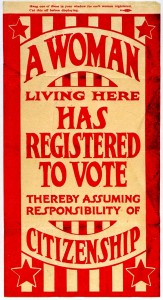
The scarlet letters of this authentic suffrage poster read, “A Woman Living Here Has Registered to Vote Thereby Assuming Responsibility Of Citizenship.” Because that’s what voting is, a responsibility of citizenship.
Whether or not the makers of this poster (which also appeared with blue lettering) intended to draw references to Hawthorne’s work or simply skimped on one-color ink printing, there’s resonating poetry here. Even Especially today.
We women and men who understand the realities of the issues need to exercise our responsibility to vote and help others access their right to vote. And we need to know the facts, share the facts.
Fact: Being a woman is not a pre-existing condition and ought not carry financial penalties for individuals and entire families.
Fact: This current attack on women is real, and, like those before, it’s about control — economic control which is fear-based and reactionary backlash.
Fact: Access to health care and, yes, even abortions, are constitutional rights — access to a clinic should be as easy as access to a church or other religious institution, not thwarted by acts of tolerated domestic terrorism.
Martha Plimpton explains the arithmetic — which is as good here at it is for jobs the economy:
Only twelve percent (12%) of US counties have an abortion provider. You read that right. (When I tell another woman who considers herself informed that very figure, it invariably leaves her agape and amazed. See, we aren’t paying attention, sad to say.) But 1 in 3 women will have an abortion at some point in her life. Think about that. Then do the math. This isn’t about luxury. This isn’t about some rare procedure that a woman can get if she really puts her mind to it or has the money. This is something 1 in 3 women feel they must do, and will do, at any cost. So, rich women will travel. Poor women will die.
Talk about literally killing the middle class.
We cannot be meek; “the meek don’t make it.”
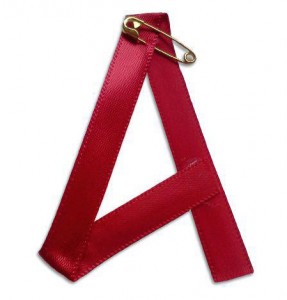
We need to be loud.
We need to be angry.
“Angry,” that’s just another thing “A” is for, like autonomy, allegiance — and action.
That scarlet letter “A” — or red ribbon “A” is the symbol of A Is For, an organization started by Lizz Winstead, Martha Plimpton, and others.
I just donated and can’t wait to wear this scarlet letter proudly.
http://youtu.be/D5VGajolrAM
Now These Are The Sort Of Political Buttons I Can Collect
I have a modest number of vintage political items in my collections… Some Nixon stuff. Some ERA stuff. I’ve even made some buttons or pinbacks too. But now I’m coveting all the union pins and pro-union pinbacks. The way things are going, one day I very well may be sitting with a young grandchild, fingerless or worse from her “work”, and I may need proof of the once-upon-a-time stories I’ve been telling her about the days when workers and even children were protected by unions.
I’ve been so busy I haven’t had time to dig out pieces from my own collection; but here are a few pro-union pinback buttons I almost bought.
A Black Cats Mystery
When I posted this image to Facebook, I did so with a quickly typed quip of, “She ain’t no holler back girl, she’s a derby grrl!”.
Now my quip came, in part, from the title of the post at Retronaut: Black Cats Roller Derby Woman, c. 1800s. My sister in law, who knows a lot more about roller derby than I do, commented that she didn’t think the quip or title were correct:
hrm. i don’t think she’d technically be a derby girl, at least not someone who competed. as far as i’m aware, women didn’t compete in derby until the 30’s. *shrug* i still like the picture. :)
This is the sort of thing that happens when people post and share things without providing any context. If only Retronaut had stated where they found the image. Grrr.
I tried to do a little (quick) research myself (as time is limited this morning; I have to go perform some maintenance — dusting and filling — of our case at Antiques on Broadway). But found nothing definitive…
Perhaps the Black Cats had something to do with performances, not roller derby, and the name references La Chat Noir, widely deferred to as the first cabaret? Then again, the images on her hat or crown look a lot like the logo for the Sunderland Association Football Club, an English association football club dating to 1879, often called the Black Cats. Anyone else know more?
UPDATE: Thanks to Marianne of Ms Dow Antiques, we have more info on this photo:
Mystery solved — Black Cat was a popular cigarette brand. So popular that people dressed up in Black Cat costumes for parties.
The Black Cat cigarette was introduced in 1904 as one of the first machine-made cigarettes manufactured in Britain.
During the early 1920s enthusiasm for the Black Cat was at a peak, with many people wearing badges and stickers featuring the cat and even going to fancy dress parties in black cat costumes.
She also noted that posing in roller skates was also quite a fad.
Thanks much, Marianne!
“The Meek Do Not Inherit The Earth – Or At Least The Part Of It Presided Over By The American Political System”
Buried inside the July 1974 issue of Psychology Today, an article which sheds some light on political movements in the United States. In Violence and Political Power: The Meek Don’t Make It (pages 35-41), William A. Gamson analyzes and discusses just what really affects changes in American politics.
Some of the article is Activism 101, but still worth mentioning.
…a challenging group must demand some change that its own membership cannot provide. A Messianic group that offered salvation to members would not qualify unless the group wanted changes in laws or social institutions as well.
I keep re-reading this article in the context of “What happened to feminism?” If you believe there’s a problem with the feminist movement, and with related issues of sexual autonomy and sexual rights, it might lie in several key places. Is it too fragmented? Unclear in it’s goals? What will history show us?
What seems unlikely, even unlikable, is the fact that violence works.
The activist groups that fought back or, in some cases, initiated violence, had a higher than average success rate; six of the eight won new advantages and five of the six were eventually accepted as well. The nonviolent recipients of attack, however, lost out completely. None of them met their goals, although one, the Dairymen’s League, was co-opted.
Violence is even more certain to reap benefits when the group’s goals are limited and when the group does not aim to displace its antagonists but rather to coexist with them. When I eliminated revolutionary groups that aimed to displace the opposition, I found that every violence-user was successful in winning new advantages and every violence-recipient was unsuccessful.
Gamson clearly states that violence is “the spice of the protest, not the meat and potatoes” but it’s amazing how effective it is. When you read that in terms of the abortion issue today, it is too clearly true. I’m not advocating bombing back; but it certainly is frightening how effective Pro-Life violence has been.
He suggests other unruly acts with which Pro-Choice groups might fight back:
Violence is not the only kind of high-pressure tactic that brings success. Ten groups used other unruly strategies on their opposition, such as strikes, boycotts, and efforts to humiliate or embarrass their antagonists.
The parting words:
Challengers who try to play by the rules that members observe among themselves should realize two things. Insiders won’t apply their rules to outsiders, and outsiders, being poor in resources, have little to offer the powerful in an alliance.
Challengers do better when they realize that they are in a political combat situation. They don’t need to look for a fight, but they had better be ready to participate in one if the occasion arises. They must therefore be organized like a combat group — with willing, committed people who know what to do, and a command structure that can keep its people out of the wrong fight at the wrong time.
But this advice really only applies to groups with limited goals. I included revolutionary groups in my sample but it should come as no surprise that none of them were successful. I can’t say what makes for success among such groups since I had no successes to compare with the failures. A more complete picture of the successful group is one that is ready and willing to fight like hell for goals that can be met without overturning the system.
Perhaps it is disconcerting to discover that the meek do not inherit the earth — or at least that part of it presided over by the American political system. But those rambunctious groups that fight their way into the political arena escape misfortune because they are prepared to withstand counterattack, and to make it costly to those who would keep them out.
The Power Of The Female Voice In Silent Film
Over at (one of his) sites, Dakota Death Trip, hubby posted this fabulous old ad. While you might think it’s an advertisement for a woman, Clara Kimball Young, it really is promoting a film, 1920’s The Forbidden Woman (not to be confused with 1948’s Forbidden Women, which allegedly stars women recruited from a Los Angeles whorehouse).
Why is Clara Kimball Young such a focal point? Because back in the day, women ruled the box office!
As I wrote in my review of Mick LaSalle’s Complicated Women: Sex and Power in Pre-Code Hollywood (my review is fine, but NWS ads in sidebar):
In the 20’s and early 30‘s women dominated at the box office. Women were the biggest stars, featured month after month on the covers of fan magazines (it was a rare month indeed when a male face turned up on the cover!), and society was fascinated with women in general.
If you’re curious about the historical role of women in and out of film, how they once held all the power and how it was taken from them, read LaSalle’s book. And then read Movie-Struck Girls: Women & Motion Picture Culture After the Nickelodeon, by Shelley Stamp. (Here’s my review.)
Also related, my post on female celebrity pitch women at the turn of the (last) century: Julia Marlowe, Selling Stuff From Head To Toe.
Borders Bleed & Blow My Mind (Thoughts On Context)
Sometimes history is thought of as it is taught: In separate chunks. But history passes, weaves, and certainly is attached and connected to time — the time behind it, the time before it, and simultaneously to persons and events which, even in attempts to understand and reclaim, we have neatly severed into subjects and categories.
History and culture isn’t simply a matter of dates or compartmentalized periods. The subject of context isn’t merely one for writers, bloggers or content curationists, i.e. photo or image with research or text story, properly credited, for real readers. Context is even more than the object, person, or event in cultural context of what came before it, what came after it. Context must include what and who are contemporaries.
For example, do you think of opera legend Marian Anderson and artist Frida Kahlo as contemporaries? As friends even? Most probably do not.
[About the image: Marian Anderson and Frida Kahlo with Diego Rivera, Miguel Covarrubias, Rosa Covarrubias, Ernesto de Quesada and others in Mexico, 1943.
More astonishing than this photo which went wild on Tumblr is the video.
The video is silent home film footage of that same trip, from the Penn Libraries Marian Anderson collection, A Life In Song, use of and upload to YouTube approved by Nancy M. Shawcross, Curator of Manuscripts, Rare Book & Manuscript Library, University of Pennsylvania on June 19, 2012.]
For in our (admirable) attempts to reclaim lost stories of Black Women and Hispanic Women (groups who have felt marginalized from Feminism and Women’s Studies), separate stories emerge. Separate stories may narrow focus, provide an ease for our brains (which many falsely claim are over-stimulated and bombarded with information; information overload is a myth) tasked with absorbing information, but so many separate stories not only lead to false notions of separate lives issues (which fosters a sense of competition, risks alienation, and further divides what is Us), but removes the full complex beauty of cultural context.
Oxford University historian Dr. Cliff Davies, in his discussion of the myth of the Tudor era, describes this compartmentalization of history as “seductive” and helping “to create the idea of a separate historical period, different from what came before and after.” I say this seduction also includes the temptation to remove the context of contemporaries. And that it ought to be avoided. Even in an age of working to create filtered focus.
Even when you have multiple blogs, collections, and curated topics — each with its own focus, there is likely to be some overlap between them. If you are aware of and include context with your collections, there will be, ought to be, some repeated content and objects across collections. Even those with the most dedicated focus.
I consider this to be not redundant overlap but more connections, yet another layer to your stories. Practically speaking from a marketing approach, it is another way to find more readers too.
And another way to blow their minds.
Curating For You; Vote For Me
[This post has been sitting in “draft” format for so long, I’m actually embarrassed! Perhaps it sat so long because I’m too embarrassed to toot my own horn?]
If you follow some of my other blogs, you know that I’ve added “content curation” or online collecting to my blogging activities. My favorite site to do this is Snip.It — and not just because I earned an Honorable Mention for my Vintage Living Today For A Future Tormorrow collection in their Earth Day contest. *wink*
Now Snip.It has a History Contest:
Make a Snip.it collection all about your favorite period in history (anything from The Enlightenment to Pre-colonial America to Gen X) for the chance to win a new iPad loaded with goodies from Inkling. We’ll evaluate the collections based on depth and range of sources (dig deep!), your captions, and Facebook likes.
You can enter a collection and snip into it anytime between now and when we choose a winner on Tuesday, June 19th.
More details here.
Whether you enter or not, please visit my Herstory collection — and if you like it, please hit the Facebook “Like” button and even subscribe. Thanks!
A Poignant Pause
I originally found this photo of Erik Lee Kirkland watching his mother, Gypsy Rose Lee, perform while censor is watching performance on alert for over-exposure when creating Gypsy Rose Lee; but find it poignant enough to merit its own post.
Going To Hell In A Handbag?
Two thoughts regarding Vote With Your Purse:
One, this is a very similar philosophy to that of the National Housewives League, which means I like it.
Two, the fact that women are paid less (no matter how rude you are, or how you opt to interpret ignore facts), means this is just another area women are held back in.
Which means that no matter how much I like it, the putting it into action is very questionable.
